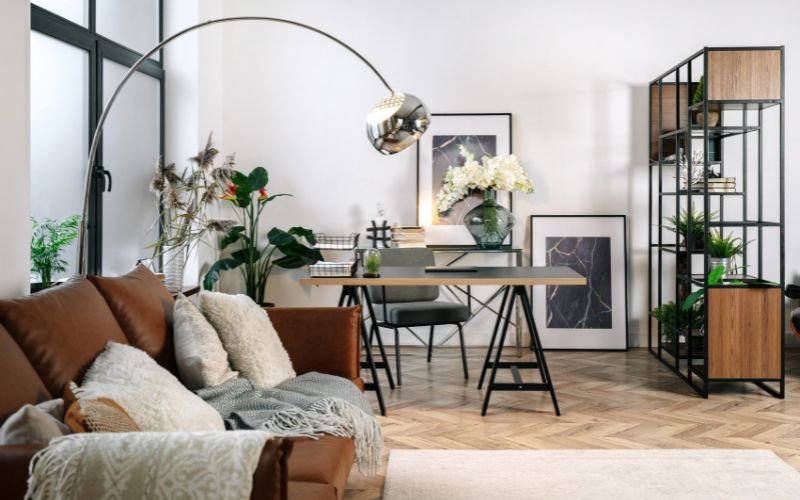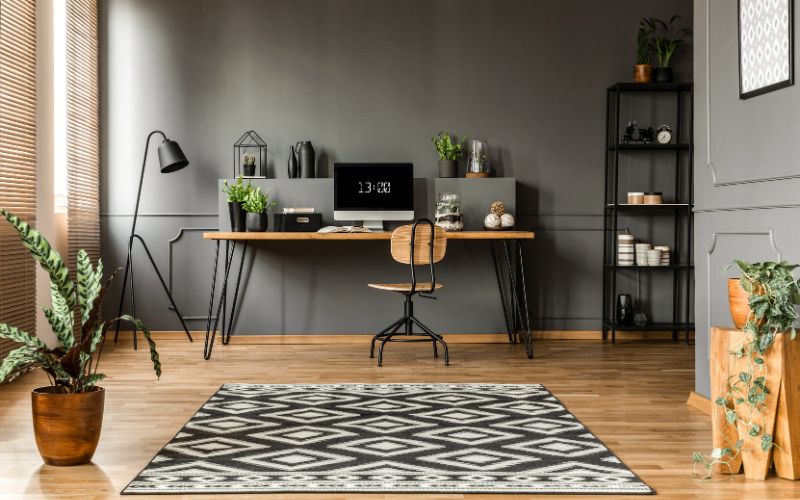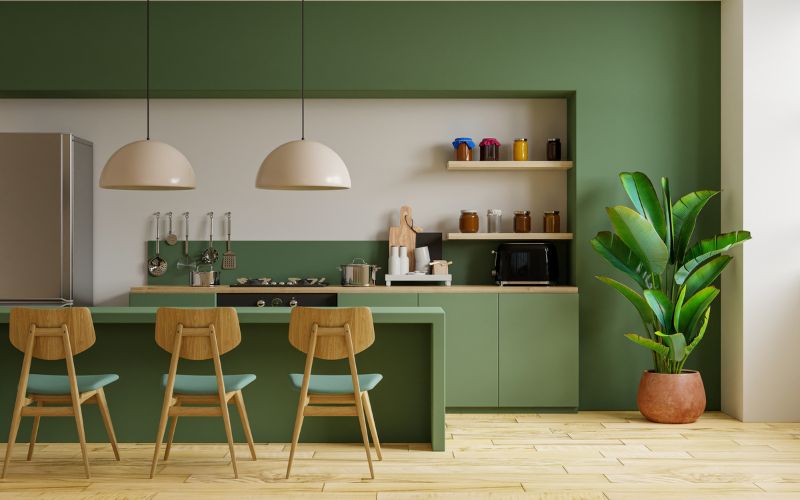When it comes to interior design, many people focus on creating a visually appealing space that looks stylish and up-to-date. However, it’s equally important to incorporate your personality into your interior design Geelong style. After all, your home should reflect who you are and what you love. Adding elements that reflect your personal style allows you to create a truly unique and special space.
This article will explore why incorporating personality into your interior design is essential and how to do it effectively. We’ll discuss various ways to infuse your style into your decor, from choosing colours and patterns that reflect your taste to incorporating sentimental items that have special meaning to you. We’ll also offer tips for balancing design elements to create a cohesive and personalised look. By the end of this article, you’ll better understand how to make your home feel truly your own.
Understanding Personality: How It Influences Interior Design
Personality refers to the unique characteristics, traits, behaviours, and thought patterns that define an individual. It’s what makes each of us distinct and different from one another. When it comes to interior design, understanding your personality can help you create a space that feels authentically yours. Let’s examine why identifying your character is crucial in interior design and how different personality types can influence your design choices.
Definition of Personality
Personality is a complex concept studied extensively by psychologists and other researchers. At its core, personality refers to a person’s enduring patterns of thought, feeling, and behaviour that are relatively stable across time and situations. Personality is often described in terms of traits or characteristics that are associated with certain behaviours and tendencies.
Importance of Identifying Personality in Interior Design
Identifying your personality is crucial in interior design because it helps create a space that reflects who you are and what you love. When you design a space that aligns with your personality, you’re more likely to feel comfortable and at ease. This can lead to increased feelings of well-being and happiness. Additionally, incorporating your personality into your interior design can help you avoid design trends or styles that may not resonate with you, saving you time and money in the long run.
Different Personality Types and How They Influence Interior Design
Personality is often described in terms of different types, and these types can have a significant influence on interior design choices. Let’s take a look at a few common personality types and how they might influence design decisions:
- The minimalist: A minimalist personality type will likely value simplicity and order. They may prefer a neutral colour palette and streamlined furniture. A minimalist might focus on one or two statement pieces rather than filling their space with many items.
- The maximalist: A maximalist personality type, on the other hand, may enjoy bold colours, patterns, and textures. They may enjoy filling their space with many items and displaying collections or eclectic pieces.
- The traditionalist: A traditionalist may prefer classic styles and decor, such as ornate furniture, rich fabrics, and antique pieces. They may enjoy a more formal and traditional approach to interior design.
- The eclectic: An eclectic personality type may enjoy mixing different styles and eras of design. They may be drawn to unique and unusual pieces and enjoy incorporating items with sentimental value into their decor.
- The modernist: A modernist personality type may prefer sleek, contemporary design. They may be drawn to minimalist styles, geometric shapes, and industrial materials such as concrete or metal.
These are just a few examples of personality types and how they can influence interior design choices. It’s important to remember that everyone’s personality is unique, and there are no “right” or “wrong” design choices. The key is to identify your personality and preferences and create a space that feels authentically you.
Understanding your personality is essential to creating a space that genuinely feels like yours. You can make design choices that reflect your unique style and preferences by identifying your personality type. Whether you’re a minimalist, maximalist, traditionalist, eclectic, or modernist, you can infuse your personality into your interior design and create a space that feels like home.
Incorporating Personality into Interior Design: Tips and Tricks
Your home should reflect who you are and what you love. Incorporating your personality into your interior design is an excellent way to create a space that feels truly your own. This section’ll explore how to identify and translate your personality into interior design and different interior design styles that reflect different personalities.
How to Identify Your Personality
There are several ways to identify your personality and what you love. Here are a few tips:
- Take a personality quiz: Many free online quizzes can help you identify your personality type, preferences, and strengths. Some popular options include the Myers-Briggs Type Indicator and the Enneagram.
- Consider your hobbies and interests: What do you love to do in your free time? What are your passions? These can explain your personality and what you want to incorporate into your interior design.
- Think about your favourite colours, patterns, and textures: What colours make you happy and energised? In what ways do you love? What textures do you find appealing? These can all offer insights into your personality and what you want to incorporate into your decor.
How to Translate Your Personality into Interior Design
Once you’ve identified your personality, it’s time to translate it into your interior design. Here are a few tips:
- Choose colours and patterns that reflect your personality: Consider incorporating your favourite colours and patterns into your decor. For example, if you love bold colours and patterns, consider using them in accent pieces like throw pillows or rugs. On the other hand, if you prefer more subtle hues, consider using them in larger pieces of furniture like sofas or curtains.
- Add sentimental items: Incorporating sentimental items into your decor can be a great way to add personality to your space. Whether it’s a family heirloom or a piece of artwork from a favourite vacation, these items can add meaning and depth to your decor.
- Mix and match styles: If you have a more eclectic personality, consider mixing and matching different types of decor to create a unique and personalised look. You can combine vintage and modern pieces or match different patterns and textures.
Different Interior Design Styles that Reflect Different Personalities
In creating design ideas for home renovation there are many different interior design styles; each one can reflect another personality type. Here are a few examples of interior design styles that can inspire your home renovation.
- Bohemian: Bohemian style is often associated with free-spirited and creative personalities. This style typically incorporates bold colours, patterns, textures, and a mix of vintage and modern pieces.
- Mid-century modern style is often associated with those who appreciate sleek, minimalist design. This style typically features clean lines, neutral colours, and simple, functional furniture.
- Rustic: Rustic style is often associated with those who love the outdoors and appreciate natural materials. This style typically features wood furniture, exposed brick or stone walls, and cozy, warm colours.
- Traditional: Traditional style is often associated with those who appreciate classic, elegant design. This style typically features ornate furniture, rich fabrics, and a neutral palette.
- Industrial: Industrial style is often associated with those who appreciate a more rugged, edgy aesthetic. This style typically features exposed brick or concrete walls, metal furniture, and a monochromatic colour scheme.
Incorporating your personality into your interior design can be a great way to create a space that feels truly your own. You can create a space that reflects your unique style and preferences by identifying your character and translating it into your decor. Whether you prefer bohemian, mid-century modern, rustic, traditional, or industrial design, you can infuse your personality into your interior design and create a space that feels like home. Feel free to experiment with different design elements until you find a look that genuinely resonates with you. Remember, there are no “right” or “wrong” design choices when incorporating personality into your interior design.
In addition to the tips and tricks outlined above, there are a few other things to keep in mind when incorporating personality into your interior design:
- Don’t be afraid to mix and match: Incorporating different styles, colours, and textures can help create a layered and exciting look in your space. So feel free to mix and match different design elements until you find an authentic look.
- Balance is critical: While infusing your personality into your interior design is vital, maintaining balance is also essential. Avoid overwhelming your space with too many design elements, and strive for a cohesive look that feels intentional and thoughtful.
- Prioritise functionality: While creating a visually appealing space is essential, prioritising functionality is also crucial. Make sure your space is designed to meet your needs, whether incorporating plenty of storage solutions or choosing beautiful and comfortable furniture.
In conclusion, incorporating your personality into your interior design is an excellent way to create a space that truly feels like yours. By identifying your personality and preferences, choosing colours, patterns, and textures that reflect your style, and experimenting with different design elements, you can create a space that feels authentic and meaningful. Remember, your home should reflect who you are and what you love, so don’t be afraid to infuse your personality into your interior design and create a space that feels like home.
Incorporating Personality into Interior Design: Creating a Space That Feels Like Home
Incorporating personality into your interior design is essential to creating a space that feels like home. You can create a unique, personalised area that reflects your style and preferences by identifying your character and translating it into your decor. From choosing colours and patterns that reflect your taste to incorporating sentimental items with special meaning, there are many ways to infuse your personality into your interior design.
Whether you prefer the bohemian, mid-century modern, rustic, traditional, or industrial design, you can make it your own by incorporating your personality. Remember to prioritise balance and functionality while experimenting with different design elements until you find a resonant look. The most important thing is to create a space that feels authentic and meaningful to you.
Incorporating personality into your interior design can profoundly impact your well-being and happiness. Your home reflects who you are and what you love, and by infusing your personality into your decor, you can create a beautiful space that feels truly like home.




